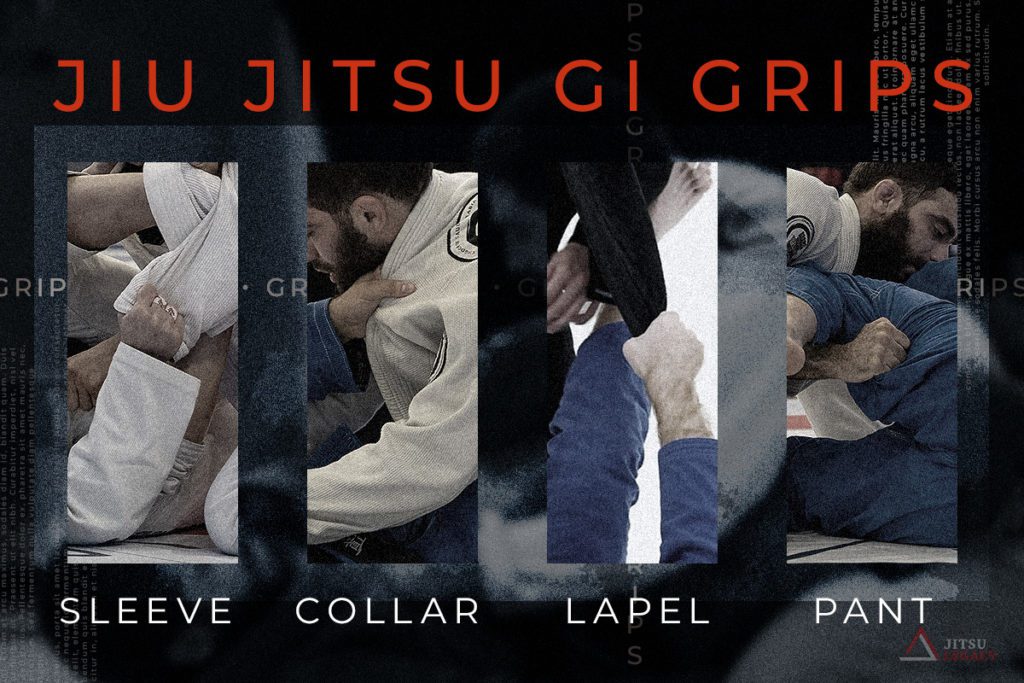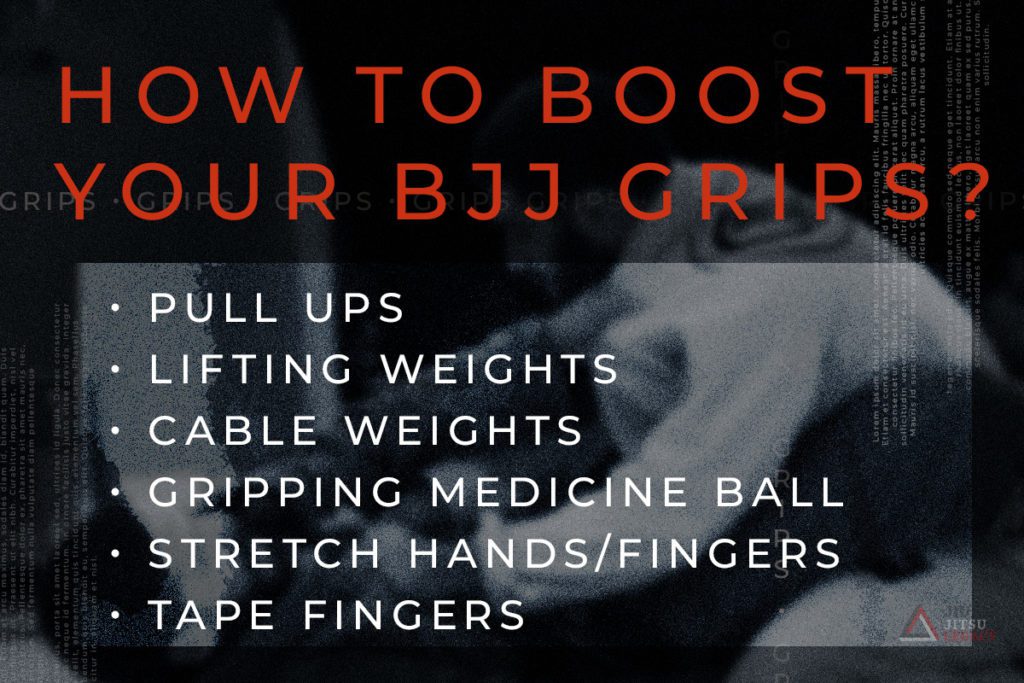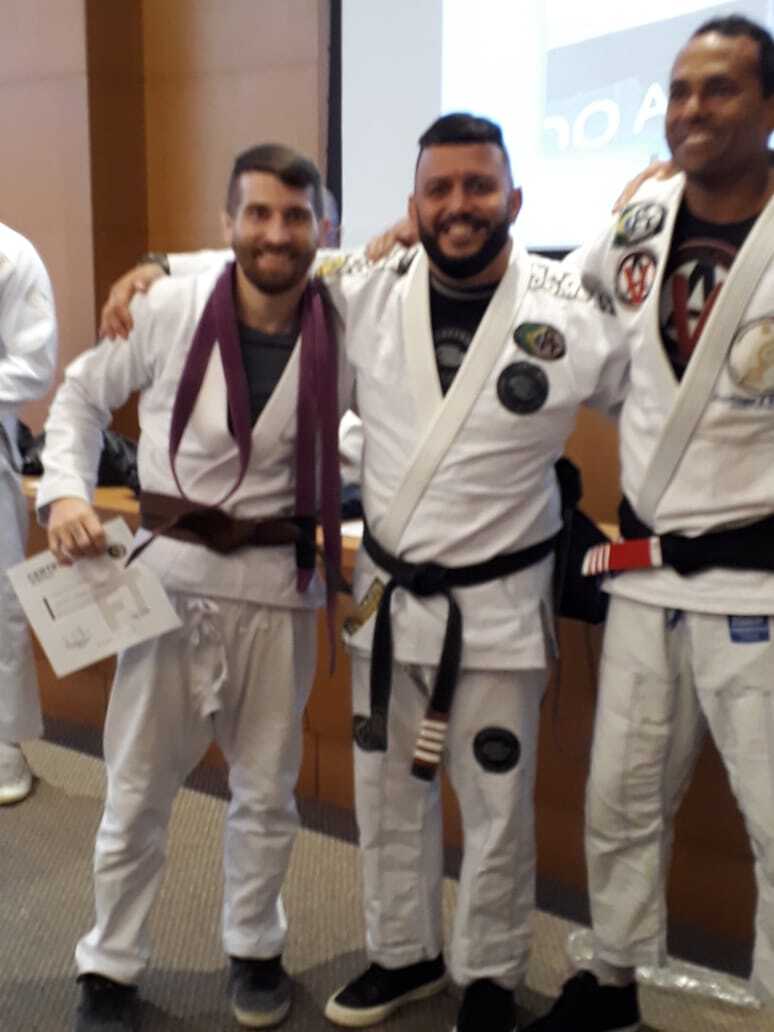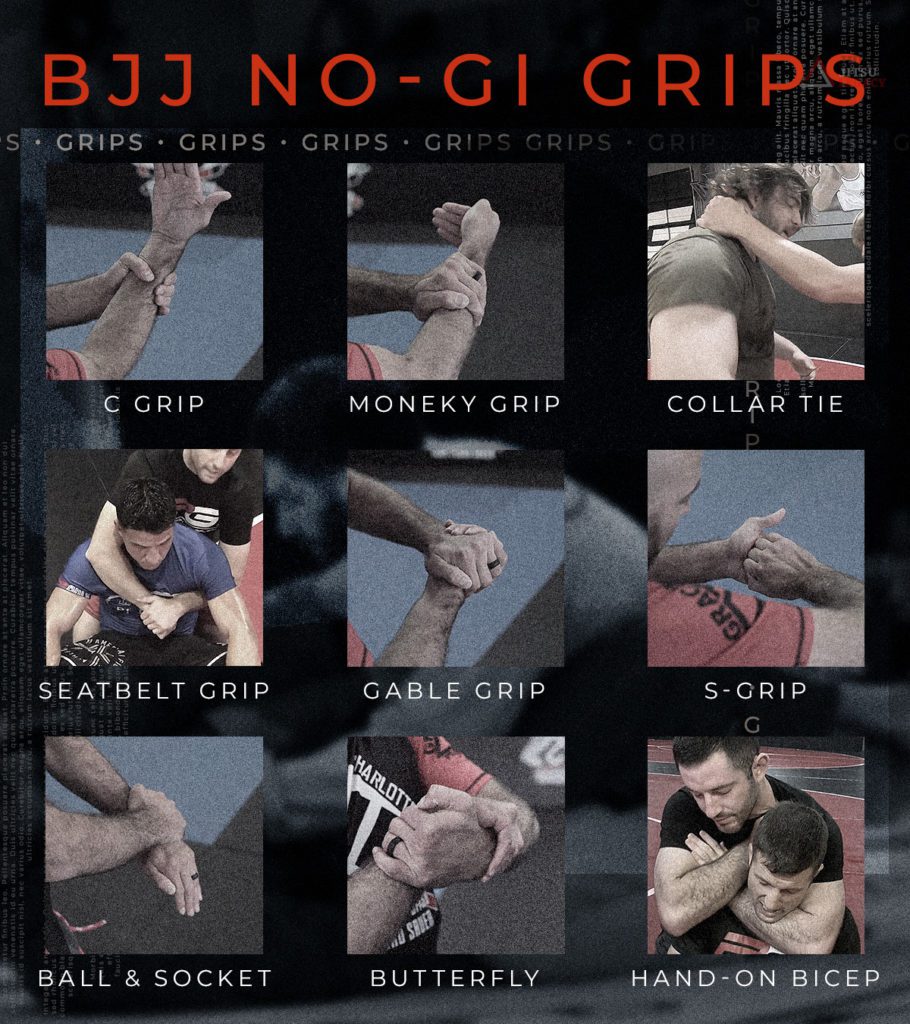Whatever BJJ technique you attempt, they all start with your grips. All BJJ techniques start with the establishment of grips to initiate and end the sequence.
For those new to jiu jitsu, this is your beginner’s guide to getting grips in BJJ. We’ll detail all the different grips used within Brazilian Jiu Jitsu and how to use them.
What are Grips in BJJ?
Grips are the points of control in BJJ and grappling. Every technique that you do in the martial art involves taking grips on your partner.
These grips allow you to control your partner and get them into position to perform your technique. There’s a wide variety of grips throughout gi and no-gi jiu jitsu that’s used for different purposes.
If you want to progress within BJJ or any form of grappling, you will have to understand how to use grips. They are the foundation of grappling, which you must understand and execute at any given moment.
Gi Grips
BJJ in the gI is all about establishing grips to initiate techniques. Here’s a list of all the basic Gi that you must know.

Sleeve Grips
The sleeve grips are must know if you practice gii jiu jitsu. There are two particular types of gi grips that you’ll use in BJJ
- Four Finger Grips
- Pistol Grips
The four finger sleeve grip is the most common and strongest of the sleeve grips. To perform these grips, you roll your opponent’s sleeves up a little to make pockets for your fingers.
Pistol grips are where you grip sleeves that look similar to holding a gun. Hence the name pistol grips
Collar Grips
Collar grips are some of the strongest grips that are used for two purposes. They’re used for breaking your partner’s posture or locking on a choke.
There’s two types of collar grips you can use which are palm down or up grips. The types of collar grips you use depend on the situation and what technique you’re attempting.
Lapel Grips
Lapel grips are another set up grips that are used on the gi top. They look similar to collar grips, but there’s a big difference.
A lapel grip is any grip from below your collar to the end of your gi. You can use lapel grips for everything from guards, sweeps, and submissions.
Pant Grips
Pant grips are some of the strongest grips that serve a variety of purposes. Anything from initiating a sweep, setting up a leg lock or holding your opponent in place to defend a guard pass.
The most common pant grips are the bottom of the pant leg, around the knees, and the waistline/belt. All important grips that you must know.
No-Gi Grips
Grips in no-gi are just as important as they are in the gi. Here are the most common no-gi grips that you must know.
C Grips
C grips are the most basic no-gi grip. This grip got its name, because your hand looks like a c.
You’ll use a c grip for everything wrist control and bicep control
Monkey Paw/Goose Head Grips
The monkey pay or goose head grips as some also call them are powerful no-gi grips. This grips is when you connect your thumb to your other four fingers to make a powerful grip
This grip got its nicknames, because it looks similar to a monkey paw or goose head. Many no-gi grapplers actually prefer this grip over the traditional c grip.
Clinch/Collar Tie
The clinch or collar tie are the grips used to control your opponent’s head and break their posture. Traditional clinches/collar ties are done where you cup the base of your partner’s head and pull it down.
Clinches and collar ties are generally used with underhooks and over hooks in different techniques.
Seatbelt Grip
The seatbelt grip is used to control your opponent’s back in back mount. One hand goes over their shoulder, while the other goes under the armpit. Connecting your hands together at their chest like a seatbelt.
If you want to control your opponent’s back, you’ll need to drill the seatbelt grip.
Gable Grip
The Gable or palm on palm grip is used for both control and chokes.
The grip got its nickname from wrestling legend Dan Gable that frequently used this control.
S-Grip
The S grip is a controlling hold where you make your hands in the form of an S. It’s used for things like control, arm triangle chokes, and guillotine chokes.
Ball and Socket Grip
The ball in socket grip is where you make a fist and place it in the palm of your hand. Grapplers mostly use this grip to lock on guillotine chokes.
Butterfly/Pretzel Grips
Butterfly and pretzel grips are unorthodox grips used for everything from control or finishing guillotines and heel hooks.
Hand-On Bicep Grip
The hand on bicep grip is the most powerful no-gi grip used for chokes. It’s used predominantly for RNCs, darces, and anaconda chokes.
Tips For Strengthening Your Grips For BJJ
Constant gripping takes a toll on your fingers and hands. That’s why you need to do conditioning to strengthen your grips. Here are some tips to help strengthen your grips for BJJ.

Pull Ups Variations
Pull ups are one of the best overall exercises that you should be doing to support your jiu jitsu game. Not only will it improve your strength, but also your grip strength.
There’s a wide variety of pull up variations that you can do to strengthen your grips. Standard pull-ups, chin ups, or just even holds to engage your gripping muscles.
One of the best pull up variations that you should do to improve your grip strength are pull-ups with a gi. You can take your gi grips and do your pull-ups. Doing this definitely increases your grip strength.
Lifting Weights
If you aren’t already, you should have a weight lifting routine. It will not only boost your overall strength, but also your grip strength.
By picking up heavy weights, your hands and fingers will strengthen with the rest of your muscle. Start picking up some weights and you’ll see a difference in your grip strength.
Cable Weights
Cable Weights are another good way to strengthen your grips. If you want to go the extra mile, then you can use your gi like with the pull-ups.
Do everything from curls, tricep extensions, skull crushers, and rows with the gi and you’ll see results fast
Gripping Medicine Ball
A great way to improve your choke grips is by gripping a medicine ball. Take a medicine ball with a smooth surface and work your choke grips.
Everything from your guillotine grips to RNC grips. Hold your squeeze for 15-30 seconds and blend this exercise into your workout.
Stretch Hands/Fingers
Stretching your hands, fingers, and wrists can really go a long way to strengthen your grips. Your hands flexibility and dexterity will increase from doing routine stretching.
Tape Fingers
This isn’t a strengthening tip, but a preservation tip. Your fingers and hands will take a beating in BJJ training.
That’s why it would be a good idea to begin tapping your fingers once you start feeling pain. Tapping your fingers gives them extra support and allows you to grip with little to no pain.
Important Tip For Getting Gi Grips
There’s an important tip that will help you when you’re establishing your gi grips. Always grip where you have the most material to grab.
This will allow you to get a better grip of your opponent’s gi. Enabling you to have more control over them when you’re setting up a technique.
Get Your Grips!
Having good grips is everything in jiu jitsu. You will need to drill all of these grips in order to improve your skills.
Also, be sure to do the strength training methods listed above. Once you do these things, your teammates and opponents will hate trying to break your grips.


